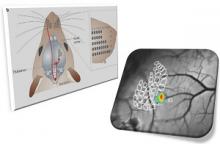- About us
- Research
- Students & Teaching
- Seminars & Events
- Directories
- Booking Rooms & Equipment
- עברית
Home » Prof. Hermona Soreq - what can we learn from 3-D decoding of neurons in the brain about the reactions of the developing brain to social harm?

